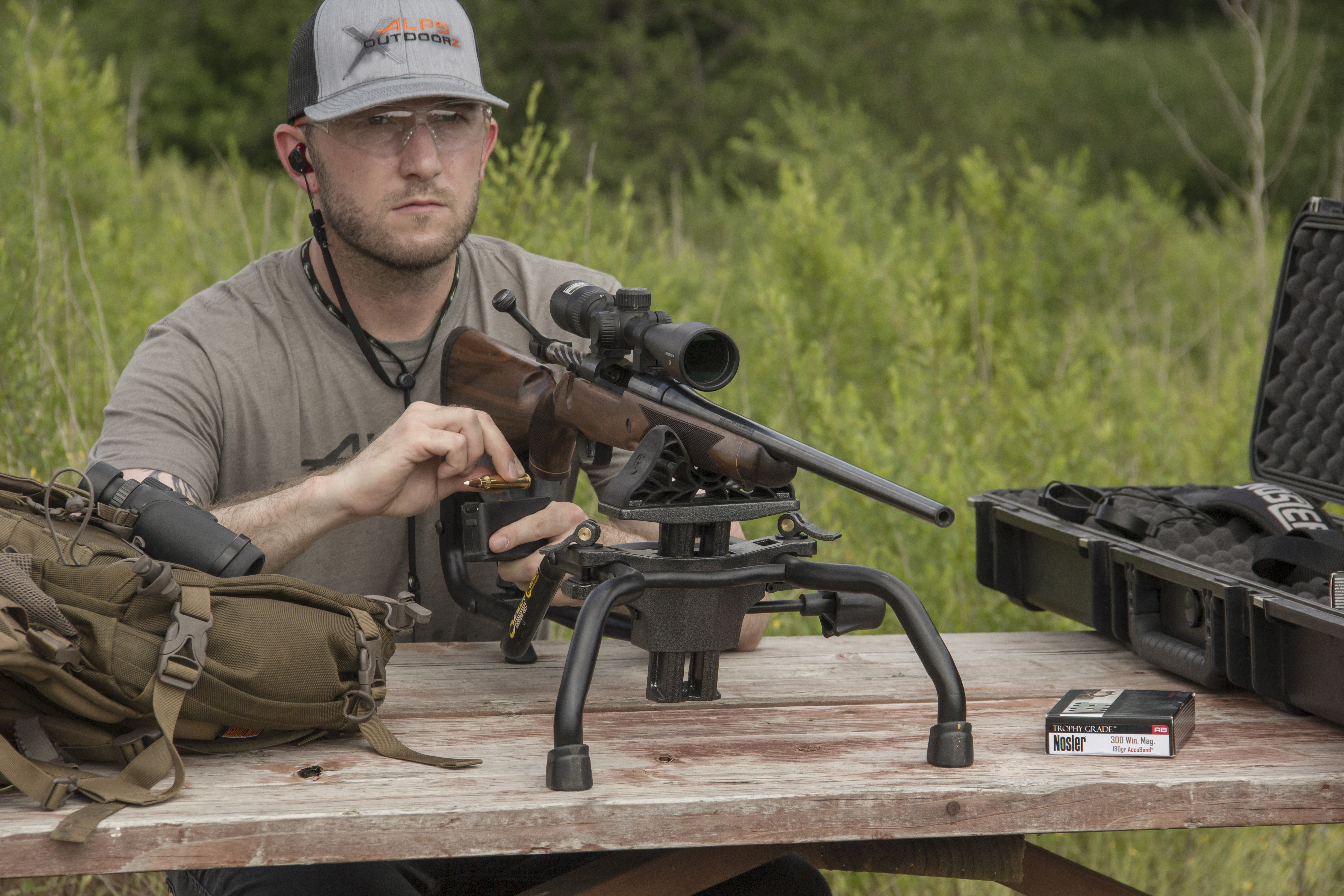
Your shooting health has been strong for years, but suddenly and unexptectedly it has deteriorated into a bad case of “accuritis.” What’s the cure for this mysterious condition? Starting with a clean slate is just what the doctor ordered.
A string of bad shooting recently plagued me, and I couldn’t allow this infection to spread into deer season. I took a hard look at all of the complex factors that could have caused my accuracy slump, but I arrogantly overlooked the rookie stuff. There was only one thing to do: Throw everything out the window and start from scratch with some of the simplest, yet most critical shooting fundamentals.
You must first trust in your rifle platform. Start at the bench to eliminate human error and ensure your rifle/optic/ammo combination is producing predictable results. A bench is also a great place to review the critical mechanics of both your tool and its master. It’s marvelous that a calculated explosion can send a fine-tuned piece of metal spinning out of a short tube at upwards of 3,000 fps. When you’re conscious of this magical process, you realize the key to accurately deliver a bullet downrange is letting the rifle do its job with minimal human interference.
Now’s your chance to focus on the most influential shooting fundamental: trigger control. Close your eyes and dry-fire your rifle at the bench. Find the most comfortable position for your finger on the trigger that allows you to press it backward in a perfectly straight line, parallel with the rifle’s stock, until the trigger breaks. Every trigger feels different — weight, contour, cycle — but the motion of your finger should be repeatable and consistent across virtually every rifle’s trigger.
GET A GRIP
There are a handful of factors that will greatly determine your grip, but “consistency” is again the keyword. The first gripping consideration lies in the design of your rifle’s stock. It should fit in your hands comfortably atthefore-endandthegripatthebutt end closest to the trigger.
Tightness of your grip shouldn’t differ greatly from rifle to rifle. If recoil is a flinching concern, here are three solutions: shoot a caliber in your comfort zone; mount a scope with adequate eye relief; get solid contact between the stock and your shoulder. Too tight of a grip will hinder accuracy because muscle tension is always inconsistent, plus you run the risk of forcing the stock against the barrel and disrupting the barrel’s natural harmonics with the bullet.

FIELD TESTING
Practicing shots from realistic field positions is extremely important — that’s why you’ve heard this lesson preached hundreds of times. But let’s take this lesson a step further. Learn how to shift your body to get the most stability from every position: standing, sitting, prone and kneeling. The more contact your body has with the ground or other stationary objects, the more stable your shooting platform.
Here’s where a hunting pack can be a tremendous aid. Aside from haul- ing gear, you can use your pack to support the fore-end of your rifle in the prone position. You can also lean into your pack from the sitting position to eliminate wobbling of your core. The weight of a pack on your back will also keep you steadier in the standing position, which is usually the most unstable of all field shooting positions.
THE BRAIN GAME
Of all factors that influence the accuracy of a rifle, your brain can be the most detrimental. If you can’t maintain composure during the moment of truth, everything can quickly fall apart. Choose a shooting sequence and stick to it. Everyone’s routine is slightly different, but here’s an example: find a rest, grip your rifle, establish solid cheek weld, aim, turn off safety, exhale, squeeze trigger, cycle new round into chamber while maintaining sight on target.
Learn your limits and respect them. If you can’t consistently fire 300-yard shots on the range with certain accuracy, don’t expect any superpowers to activate in the field. Over-thinking your shot can also spell shooting doom. Once you’ve decided to kill an animal, focus on your shooting sequence and nothing else. If your instincts led you to bearing down on your rifle in the first place, odds are you’ll be thrilled with what’s lying at the end of the blood trail.
WATCH: HOW TO USE A SLING TO SHOOT BETTER


